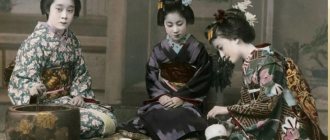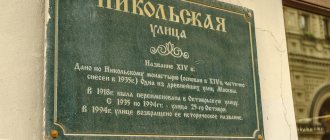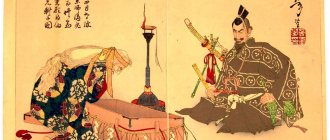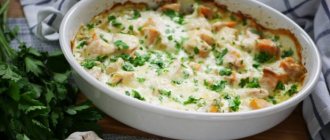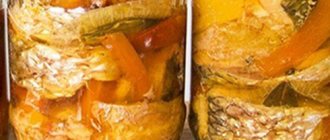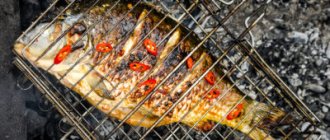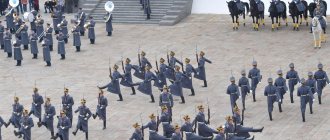Each item on the tea table has a specific meaning. The Chinese treat their symbols with care. During the ceremony, they pour tea over the figurines, invoking happiness and financial well-being. The purpose of the tea ceremony is not just to drink tea, but to calm down, take a break from the hustle and bustle, and learn to contemplate beauty. The success of a tea master depends on how much he himself can slow down, and how quickly his guests can plunge into a meditative state.
History of origin
Many beliefs claim that the tea ceremony originated in China; there is no exact date of its birth. Legend has it that such a love for drinking tea appeared thanks to the Buddhist monk Bodhidharma. The monk was sitting in a small room meditating when suddenly he suddenly felt sleepy.
To prevent this from happening, he tore out his eyelids and threw them away. At that place, interesting unknown leaves began to sprout, which Bodhidharma’s disciples collected and poured boiled water over. The result was a delicious drink that added vigor.
Next, the story of the origin of the tea ceremony moves to Japan, which also actively accepted this tradition and diluted it with its own rules.
During the tea ceremony, the Japanese felt harmony with their body and those around them. In such an environment, smart thoughts visited them, they talked about their worries, affairs and plans.
Briefly about the ceremony
What you need for tea drinking:
- Box with tea leaves;
- Teapot;
- Large bowl for drinking a drink;
- Cups for guests;
- Tea spoon;
- Bamboo stick.
When guests arrive, they immediately put water on the boiler to heat. In the meantime, they are offered a light snack. They are mainly served snacks and sweets.
When the ceremony participants have eaten, they go out into the garden, communicate and prepare for the sacrament of the ceremony. Then the owner invites guests, and the tea master cleans all the dishes. The Japanese one is a cup for tea, into which the tea leaves are poured and a little boiling water is poured in, then stirred with a special bamboo stick until foam forms. Next, add the rest of the water. The tea is brewed - green powder, usually it can be the most popular type of matcha tea or genmaicha tea. Matcha is an exquisite green tea variety whose leaves resemble spider legs in appearance. Genmaicha tea is Japanese tea with rice. The photo shows whose genmaicha.
The tea presentation begins. The host presents the brewed tea to the most important guest, who takes a sip and passes it to the next participant in the ceremony. The cup is passed around in a circle, and it again goes to the master. This is how the presentation of the drink and the unity of the ceremony participants take place.
After the presentation, tea is poured into the teapot, brewed individually for the participants, and served with various sweets. After this, the owner leaves the house, the invitees then go out into the garden. Finally, the master bows to the participants, as if thanking them for their visit. Now, in Japan, such tea drinking is much easier and faster. The Japanese are hardworking people and they do not have time for the ceremony. Therefore, they often buy bottled tea and brew tea in bags.
China
China pleases with its traditions of holding tea ceremonies, which allow you to fully enjoy the aromas and tastes of drinks, as well as the atmosphere that is present around. The process always sets up positive emotions, allows you to get rid of negative thoughts, and completely reveals all the secret questions inside each person.
The tea ceremony in China is held every week, it is preferred by different classes of people, both successful and rich, and poor and simple.
During the process, all people are equated to the same level, at this moment there is no division by class and wealth. The Chinese tea ceremony is held on special occasions, they are as follows:
- An apology and a plea for forgiveness.
- Wedding tea party.
- Tea party in honor of the birth of a child.
- A tea ceremony as a sign of friendship and respect for loved ones.
- A reason to meet the parents of the bride/groom.
For the ceremony, the Chinese use many types of tea, which calms, helps to collect thoughts in the head, and gives the opportunity to answer any questions to oneself. The most commonly used varieties are red, green and black tea.
Stages of the tea ceremony
It is better to choose gongfucha as the first tea ceremony. It is quite spectacular and not very difficult to carry out. Gunfucha translates as “mastery of tea.” Oolongs, such as the Tie Guan Yin variety, are ideal for this ceremony.
While drinking tea, try to keep all your movements slow and graceful. Avoid unnecessary fuss and loud noises.
- Preparation. Pour the tea into the chahe, prepare the water and the rest of the tea utensils. You will need tea tools, a shepherd, a teapot, chahai, tea pairs and stands for them.
- Getting to know the appearance and aroma of tea. Take chahe with tea in your hands, bring it to your face, inhale the aroma of dry tea. Invite guests to repeat the action.
- Warming up the dishes. Pour boiling water into the kettle. Fill it to the top. Then pour the water into the chahai, and pour it into tea pairs. Pour tea into tall cups first, then into low ones. First pour the water from the tea steam onto the teapot (to keep it warm), and then onto the figures.
- First infusion. Pour the tea leaves into the teapot. To do this, use the spatula and funnel from the tea tool set. Pour boiling water in there. Without waiting for brewing, pour the tea into the chahai. You don't drink the first infusion. It is needed to clean the tea from dust. Repeat the manipulations in the same sequence as during warming up.
- Second infusion. Pour boiling water into the kettle and pour hot water over it. Take the pause required to brew your type of tea (for Tie Guan Yin it is 20-30 seconds). Then, with a graceful movement, pour the infusion into the chahai, and from there into the tall weixiangbei bowls. Fill the bowl three-quarters full. Take wide pinmingbei bowls and cover the tall ones with them. Take turns clasping the tea pairs with the fingers of your right hand, turning them over, placing them on the stand and handing them to the guests. During subsequent brews, guests turn them over themselves. Remove the wenxiangbei from the tea pair and bring it to your nose to smell the aroma. Try Pingmingbei tea.
- The following infusions. Tea is brewed several times. The number of brews depends on the type and quality of tea and the wishes of the guests. Pay attention to yourself and your guests to how the aroma and taste of tea is revealed with each brewing.
Japan
The Japanese tea ceremony is a part of the culture that absolutely all Japanese adhere to. This is an entire art, which is strictly forbidden to neglect. The Japanese ritual of drinking tea allows you to get closer to others, share your thoughts, find pleasant interlocutors and simply relax.
The tea ceremony is held in special places; for this purpose, a suitable room is fenced off from strangers who do not take part in it. The event is organized by one owner, he happily invites all guests to his place, allows him to enjoy the tradition of tea drinking and have a great time. Among the main places for the ritual are:
- Tea garden.
- Stone path.
- Tea house.
Place for tea
Tea drinking is held in a special area. Ideally, this is a garden, with a path leading to the house - this is where the ceremony itself is held.
In modern realities, the Japanese often do not have the opportunity to acquire their own garden, so the venue is often ordinary premises, separate rooms, or even just a small table
.
Garden - tyaniva
It is usually surrounded by a fence and has a gate in front of the entrance. Guests can leave personal belongings and change shoes outside the gate. Tyaniva is usually small, but very cozy. There is an atmosphere of calm and subdued aesthetics here.
Evergreens planted on the territory protect the garden from bright sunlight. There are stones covered with moss and decorative lanterns everywhere. In the evening and at night they lightly bless the guests, escorting them to the fabulous mystery.
Path - roji
Literally the name in Japanese sounds like “road sprinkled with dew.” The roji is usually paved with natural stones and resembles a path winding between the hills.
Its execution, size and shape are limited only by the imagination of the architect. At the end of the path, in front of the house itself, there is a well where guests can perform a ritual ablution.
House – chashitsu
The house for tea parties is modest and small, consisting of only one room with six to eight windows. They are located quite high so that the view from the window does not distract from the ongoing ritual, but only lets in the scattered rays of the sun.
The entrance to the chasitsa is low and narrow - such a cunning design forces everyone present in the room to bow, bending down, regardless of their status in society. During the times of the samurai, a narrow passage did not allow them to enter the house with weapons; warriors were forced to leave them outside.
The house is furnished very simply: tatami on the floor, a fireplace in the center, and a wall shelf - tokonoma. It contains incense, a flower arrangement and a scroll with a saying written by the master especially for the participants.
In Uzbekistan
The Uzbek tea ceremony begins with green tea, then is accompanied by serving baked goods, sweets, dried fruits, and other dishes. The main feature of the tradition in Uzbekistan is that the more important and expensive the guest, the larger the cup of tea he is entitled to.
Such a step shows respect for a particular class of people and confirms the fact that the guest was not invited in vain. Even an uninvited person will be poured tea into a bowl as a sign of gratitude for such a visit.
Tea is prepared as follows: a heated porcelain teapot is used, into which 1 teaspoon of dry tea mixture is poured, a quarter is filled with boiling water, held over the fireplace, then boiling water is again added to the mixture for 2 minutes. Before drinking, tea must be poured into the bowl at least three times and poured back into the teapot. Only in this case will the entire ritual be observed.
How to choose dishes for a tea ceremony
Teapot (chahu). The ideal teapot is a clay one. Clay helps it retain heat longer. Tea masters especially value teapots made from Yixing clay, which is mined in China near the city of Yixing. Most online tea stores supply such teapots to Russia.
The spout of the teapot should be level with the neck - this way the tea will not spill and the lid will not fall off. When choosing a kettle, check for cracks. If you are holding ceremonies for 1-2 people, then a small teapot will be enough. To brew tea using Lu Yu's method, buy a transparent teapot.
Before buying a kettle in a store, you need to test it by pouring boiling water. When water is poured out of it, they look to see how smooth the stream is. Pinch the hole on the lid with your finger - if the boiling water stops flowing, then everything is in order and the lid is sealed.
This kettle can be bought for 500 rubles, it is suitable for 2-3 people
Cup with lid (gaiwan). Typically, gaiwan is used for travel teas and picnics.
Travel kits with gaiwan cost up to 1,500 rubles on AliExpress
Tea pair (chaduy). It consists of two items - a tall and narrow wenxiangbei bowl, and a low and wide pinmingbei bowl. From the first they inhale the aroma of tea, from the second they drink. Tea steam is used at gongfucha tea parties. For the pinch ceremony you only need a bowl. Its second name is pinchabey.
The upper bowl wenxiangbei denotes the masculine principle, and the lower pinmingbei the feminine principle.
Tea box (chahe). This is an oblong bowl with curved edges. Tea is poured into it and offered to guests for introduction.
At the beginning of the ceremony, the tea master holds the chahe in his hands, enjoying the appearance and shape of the tea leaf, then inhales its aroma and passes it around to the guests.
Vessel “sea of tea” (chahai). This is a small transparent jug. Tea is poured into it from a teapot before being poured into bowls. Chahai is needed to pour tea to all guests at the same level of brewing.
The transparent walls of the chaya help the master determine how many bowls one brew of tea will be enough for
Tea board (shepherd). This is a board with elegant carvings and a tray inside. Water and remaining tea are poured into it. Experts recommend choosing a shepherd with a metal tray - then the sound of falling drops of tea can be heard as the sound of rain hitting the metal window sill.
Shepherd is the field of activity of a tea master
Tea instruments (chaju). The set consists of a funnel, tweezers, a needle, large and small spoons, and a tea brush. 3-4 items are often sold as a set. It’s good if it contains at least a spatula, tweezers and a needle.
Tea tools make the master’s work easier and make his movements more aesthetically pleasing
Stand for a tea pair. This is a miniature clay tray, it is needed only for the gongfucha ceremony.
Tea jar or teapot (chaguan). Tea is stored in it. Teapots are made from different materials. It is important to choose an opaque option - sunlight spoils the tea.
Tea pond. It is a deep bowl. Required only for the Chaozhou tea ceremony.
In Kyrgyzstan
In Kyrgyzstan, drinking tea is a ritual without which they cannot live a day. The tea ceremony is a separate tradition; it is preferred by adults and children. Tea is drunk from bowls; they are placed on the table for each guest individually. Only the head of the family has the authority to pour tea into bowls when treating his guests. An important point is that the bowls are only half filled.
Tea in Kyrgyzstan is prepared from roasted flour, milk, pepper and salt. On holidays, they brew it with lemon, orange, cinnamon and added sugar. The favorite tea in Kyrgyzstan is green.
How much does a tea ceremony cost?
Ceremony at the tea club. If you want a master to perform a tea ceremony for you, look for a tea club in your city. The cost of the tea ceremony depends on the type of tea and the number of participants. If the master treats you to the cheapest variety, then the tea party will cost 500–600 rubles for one participant. To try expensive tea, priced at 20,000–30,000 rubles per 100 g, one ceremony guest will have to pay 3,500–4,000 rubles per person.
For example, in the Moscow club “I Don’t Tea My Souls” a service for 4 persons costs 3,800 rubles, and in the “Tea Workshop” club - 2,800 rubles.
Also, many clubs offer an outdoor tea ceremony service.
Tea. The price of tea depends on its type and variety, and may differ by several thousand rubles. Average prices for popular varieties of tea in Russia:
- White tea - 300-2000 ₽ per 50 g
- Green tea - 100–30,000 RUR per 50 g
- Oolong — 150–4000 ₽ per 50 g
- Red tea — 100–15,000 RUR per 50 g
- Puer - 1300–10,000 per flatbread.
The same variety of tea grown in different provinces can vary significantly in price.
Green tea Longjing Jilou (spring 2020) in the Moichai.ru store - 760 ₽ per 100 g
Green tea Emeishan Gaoji Longjing (spring 2021) in the Moichai.ru store - 6900 ₽ per 100 g
Dishes. A kettle can be found for 500-1000 ₽. If you want a handmade teapot or made from Yixing clay, then prepare to pay from 4,000 rubles to 180,000 rubles for it.
Prices for other dishes:
Bowls - 40–40,000 ₽
Chahai — 250–8000 ₽
Gaiwan — 200–60,000 ₽
Tea tools - 500–2000 RUR
Ceramic bowl for a beginning master in the Moychay.ru store - 48 ₽
Porcelain bowl in the Moychay.ru store - 44,300 ₽
In England
The tradition of drinking tea and holding ceremonies dates back to the 19th century and continues to this day. It is carried out according to all the rules, attention is paid to even minor details, such as setting the main table. For holidays, only a white tablecloth is used and beautiful flowers are placed in a vase. A porcelain set is chosen as tableware.
The English tradition of tea drinking involves drinking tea only at strictly designated times, namely: for breakfast, second breakfast, at 5 pm. Only this time, according to the British, is considered more appropriate and convenient for the ceremony. The tea is drunk slowly, accompanied by pleasant conversations.
In Russia
In Russia they began to drink tea in the 16th century; it was made from herbs, fruits, cherries, and currants. It was prepared in a samovar for the whole family; they drank it with buns, gingerbread, and bagels. Comfort and coziness were created around. Russians are accustomed to diluting tea with boiled or cold water to reduce its concentration.
Each family member or guest should have his own mug from which only he could drink. They were rarely limited to one mug, despite the fact that it was voluminous in size. You are allowed to drink tea at any time of the day. Only the owner serves guests, pouring them a full cup. This suggests that they are welcome people in this house.
What kind of tea do they drink in the Middle Kingdom?
The Chinese rarely use imported tea leaves. This is not necessary when the domestic market is rich in fresh, own varieties:
- Te Guan Yin,
- Pu'er,
- jasmine
- chrysanthemum
- Ren Shen Wulong,
- shu/sheng puer,
- Longjin
- Bi Luo Chun.
These are the most common varieties that are consumed in any family and brewed in inexpensive cafes. In expensive restaurants you can find elite varieties:
- Te Guan Ying,
- Bei Hao Yin Zheng
- Feng Huan Dan Cun,
- Jin Zui Mei
- Mao Fen
It should be noted that the Chinese do not like flavored teas. Mostly natural fruit drinks are brewed or without additives with the original composition. There are many more places where you can drink tea in China than beer bars in the Czech Republic. Moreover, even in ordinary eateries and cafes you can find a very good selection of tea.
In India
Residents of India pay much more attention to the tea ceremony than in other countries, and it lasts much longer. Everyone is preparing for this event, trying to make it solemn and memorable. Clay cups called kullarkhi are used for the ceremony, from which it is convenient to drink drinks.
Tea is brewed with milk, various spices are added to it, and they are combined with sweets. In India, tea can be prepared in advance, stored in special containers that resemble Russian samovars. They allow you to keep your drink warm for a long time. In India they like strong tea; it is not diluted like in Russia.
How to prepare for a tea ceremony
Create an atmosphere
Chinese tea drinking is usually done on the floor. A carpet or blanket is laid on the floor, and a shepherd tea board is placed on it. Pillows or bolsters are placed on the carpet for guests - they will have to sit on the floor for more than an hour.
The setting for a tea ceremony should be as aesthetic and meditative as possible. Candles, Chinese lanterns, and figurines will come in handy. You can turn on a playlist with music for yoga or meditation. Ideally, it would be Chinese ethnic music, for example, as in the Chinese Taoist Music playlist on Apple music.
It is better for both the master and the guests to come to the ceremony well-fed. In case anyone gets hungry, keep bowls of dried fruits and honey near the tea table. It is better not to take sweets - they dull the taste buds and guests will not be able to feel the subtle notes of tea.
Prepare the water
Tea masters pay the most attention to the quality and temperature of water. For the tea ceremony, only spring water is used. Boiled and filtered are considered unsuitable for tea drinking.
The tea ceremony master heats the water to 90 degrees Celsius. Hotter water is considered “dead” and loses its beneficial properties. A kettle with temperature control will simplify the process. The ancient Chinese did without electric kettles. They observed the water as it warmed up. By the way she behaves, you can determine her temperature.
Stages of boiling water
First, wait for the water to hiss. When it is heard, open the lid and begin to observe the water.
- The Chinese call the first stage “fish eye”. You will see small bubbles at the bottom of the kettle. This means that the water has heated up to 55 degrees.
- The second stage is the “crab eye”. The bubbles increase in volume. The water temperature rose to 77 degrees. At this stage, you can brew white and yellow tea.
- The third stage is “strands of pearls”. Bubbles rise to the surface of the water, forming threads. The water is heated to approximately 85 degrees.
- The fourth stage is “the sound of the wind in the pine trees.” It lasts a few seconds. It is usually difficult for a beginning master to catch this moment. The water begins to make a loud noise. The water temperature has reached 90 degrees, it's time to turn it off. This water is suitable for brewing green, red, black tea and oolong tea.
- The fifth stage is the “bubbling spring”. Active bubbling begins in the kettle, and the water begins to overflow. At this stage, the water is already considered “dead” and the tea will not open as it should. Only fruit teas can be brewed with boiled water.
Then the water is poured into thermoses or the kettle is placed on an alcohol lamp with a small flame. It is important that the water does not cool, but does not boil. When drinking tea, thermoses or a kettle should always be at hand.
Dishes and accessories for tea drinking
The tea ceremony is a ritual for every country, and much attention is paid to it. To ensure that the process is not only pleasant, but also correct, it is not enough to create the right atmosphere and gather guests; it is important to take care of the availability of dishes and accessories that will fully describe the event.
For the tea drinking process it is usually used:
- Kettle or samovar.
- Container for storing the mixture.
- Saucer.
- Cup.
- Symbolic tablecloth for the table.
It is best to purchase a complete set, which includes a set, tablecloth, containers for storing dry tea mixture, spoons and more.
The modern market offers a huge range of products, which is confirmed by the fact that the tradition of the tea ceremony does not fade away, it only develops with each generation.
Where can you learn the art of the tea ceremony?
It is better to study the art of tea in person. Only in this way will the tea master be able to convey the atmosphere of the ceremony and give feedback. If you have a tea club in your city, contact them for training. In some places you can even get a certificate for completing the course. If it is not possible to undergo face-to-face training, you can choose video courses.
Training courses on Moychay.ru - 3,000–15,000 rubles.
In addition to technique, the master of the tea ceremony will need to hone his storytelling. During tea drinking, it is customary to entertain guests with legends about tea and tea deities. Guests often ask questions, for example: “Why do you need chahai?” or “Why should the first infusion be drained?” It is important to know the theory and be able to respond to guests. Read more tea legends and learn the names of tea utensils and Chinese symbols.
A selection of tea legends on the VKontakte public page
From books, many masters recommend “The Way of Tea” by Bronislaw Vinogrodsky. It describes in detail the history of tea, tea legends, tea varieties, utensils and the sequence of actions in tea ceremonies.
Bronislaw Winogrodsky's YouTube channel
